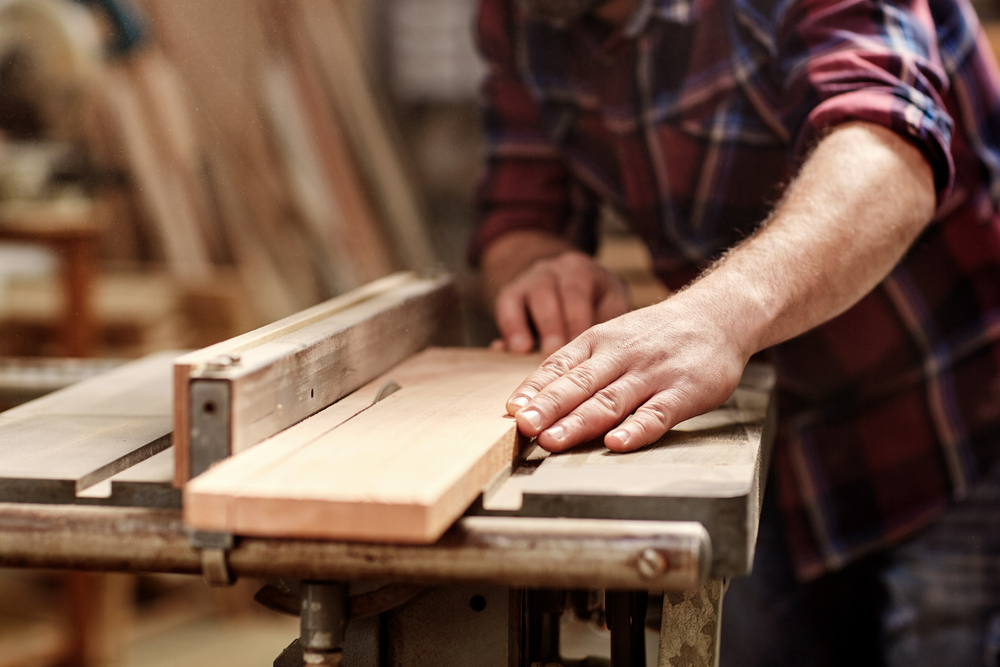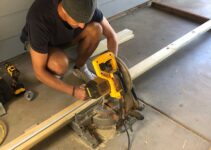How to Set up a Website for Woodworkers in 5 Easy Steps

Woodworkers have a lot to share—from templates to woodworking business plans to techniques to safety procedures—but it is nearly impossible to keep all this information organised without a website. A website is also the best asset one can have, to sell woodworking projects. Particularly if you have an Email list. But how do you do it?
Today, you will learn how to set up a website for woodworkers. The steps are:
- Finding a domain
- Buying a web hosting package (there is a great alternative I share)
- Setting up your website
- Managing your content
- Marketing your content
By the end of this tutorial, you should be able to proceed and follow the steps I will share with you. I took the time to set them in the proper order to make it easy for you.
(DISCLAIMER – “Some of the links on this web site are affiliate links. Keep in mind that we may receive compensation for recommendations made about the products and/or services. This compensation comes at NO extra cost to you and may be in the form of money, services and/or complimentary products and could exist without any action from a website visitor.”
Please refer to the full disclaimer here.)
FINDING A DOMAIN
The first step to building a website is to find an available domain name. The domain name is the name of your URL. For example, Google’s domain is GOOGLE.COM. The word “Google” is the domain, while the .COM part is the domain extension. This can also have .AU or .CA as an example for different countries and for the country you’re in. If you wish to market into the larger audience of the US, then .COM is the way to go. But where do you buy it?
WHERE TO BUY A DOMAIN NAME
You can buy domain names from domain registrars or from web hosting service providers. At best, you need to buy from a registrar as it has a huge list of domains for sale, which means that you can buy it for a lesser price. Here are some tips when choosing a domain name:
- Make it short – short domains are easier to remember, and people can directly type your domain in the URL should they want to visit your site again. As you may have observed, the most popular brands have domains no longer than two syllables. Examples are Twitter, Facebook, Etsy, etc.
- Use a Keyword – since your website is about woodworking, the word “wood” must be in your domain; the word ties up your business with your name, and it stays relevant.
- Make it unique – a unique domain name is brandable. Make sure that the domain name you choose is not owned by anybody else. Just do a Google search to find out. If there is any business that uses that domain, do not be tempted even if the domain is available in another extension.
- Use TLD – TLD means top-level domain like .COM, .NET, .ORG, etc. A top-level domain has more authority among users. While it is debatable if TLDs rank better in search engines, what is clear is that non-TLD domains sound spammy to people.
And as far as pricing goes, single-word domains are costly, while longer ones will cost you no more than $50 per year.
Do not forget to buy an email address—this is a professional email bearing your domain name where people can contact you for business.

BUYING A WEB HOSTING PACKAGE
The next step once you have purchased a domain is to buy a web hosting service package. Do not be lured into buying website-building packages from “web-builder” companies.
These companies would charge you more and more money should you need more services. The best course of action, and the most affordable, is to buy a web hosting packing from providers like Hostinger, SiteGround, and Bluehost.
With these companies, you can buy a web hosting service for as low as $4 per month for a year, and then subsequently only pay $20 per month on your succeeding years.
But wait, what is a web host?
Before you can show your website to people, you need to store your files in a server—the black box that communicates with other servers and web browsers.
In the old days, you must buy this server, set-up your file transfer protocol programming, and the launch your website.
Now, all you need to do is to rent them. This is what web host providers do. They rent out servers that you can use, and they take care of all the maintenance and speed upgrades. Here are some tips to select the best web hosting service provider:
- Must offer high-speed server page loads
- Must be compatible with WordPress
- Must have a high storage limit
- Must offer at least 25,000 traffic per month; unlimited is better
The best package is always the middle one. Usually, these providers offer a starter pack, a middle tier pack, and a professional pack. Get the middle tier as this allows you to build unlimited websites.
Once you get to build a website, you may find yourself wanting more. Also, buy the plan of your choice for three years. This may be costly at first, but you will only pay the regular price after three years, which means you can save a lot of money.
But there is a better option that provides a Website, page and funnel builder, sales software, and Affiliate management program – for FREE.
GROOVEPAGES
GroovePages has everything you need to sell products and services online! It is truly the all-in-one software.
If you are just starting, this is the best FREE page builder. You can start for FREE, build a website and see how it goes.
No harm done when it is for free. There is an Academy and Facebook page that supports you and has video tutorials to help you get started and grow.
GroovePages allows you to build 3 Websites with FREE hosting. There is an upgraded paid plan that gives you more options and there is also a Platinum paid plan that has the full suite of tools.
Setting up your website in GroovePages
Once you have your Domain name through Godaddy or whoever you get your domain name through, you need to direct the domain to be hosted by GroovePages (did I mention that GroovePages has FREE hosting – for life).
This process can be found within the Groove Academy video tutorial. Once this is completed, or while this takes place (it can take up to 48hrs), you can start to build your website.
With the Free version you get one template you can work from, otherwise it is an easy to use drag and drop from a pre-made Blocks and Elements provided.
Utilise the free tutorials and the Facebook group for support. The pages are fully optimised and there is no need for any plugins to be installed.
The Free GroovePages plan is better utilised to create landing pages and sales funnels for selling products, not really for blog content. The paid version has GrooveBlog where you can have your blog content.
SETTING UP YOUR WEBSITE IN WORDPRESS
If you do not choose to go with GroovePages then this is what you will need to do. I host two of my websites with Bluehost and WordPress.
I plan to move them over to GroovePages. (It may have already been completed when you see this post). Bluehost and WordPress are great platforms and I have nothing against them, I just feel that GroovePages is the one for me at this stage.
The next step is to set up your website so you can publish your content, such as the most profitable woodworking plans that your audiences can buy. While there are many platforms that you can integrate with your web host provider.
WordPress is a content management system. It is the tool that allows you to create web pages, add photos, sidebars, blogs, and everything that a site visitor would see in your site.
You can install WordPress with only one click. Once WordPress is installed, set-up the following:
- Install an SEO plugin – the best out there is Yoast, but it is costly. If you are just starting out, use RankMath. It is free to use, and it will guide you on how to optimise your pages and content for search engines.
- Point your domain to your web host – if this is too technical for you, just send an email to your web host and ask for your name servers. They will give you two. Now, give these two nameservers to your domain registrar and ask them to point your domain to these nameservers.
- Register your domain in Google Analytics and Google Search Console – this is critical, as you need to analyse how your website is performing. Just go to Google Analytics or Search Console and follow the instructions.
- Use a page optimiser – most web hosting services have a plug-in for this. What it does is it measures your site speed. If it is slow, it provides recommendations on how to fix it. Site speed is important. People will leave your website if it does not load in three seconds.
- Pick a Theme – There are free themes to choose from that can get you started, don’t dwell on this too much as it can be changed later on if you find something else you like or as your website evolves. I use Schema paid version, however there is a Schema Lite that is for free.
You should also set-up your pages such About Me, Terms and Conditions, Privacy Policy, etc. This is also the time to set-up WooCommerce if you are planning to sell, and then set-up your billing pages, shipping pages, and check out pages.
Managing your content After your website is set-up, it should now look ready for customers and site visitors to view.
The next thing you must do is to manage your content. If you have a store, you should also upload your products so people can see what you are selling, like woodworking DIY plans.
Content is not just blog posts but also your product pages. What you must do is to put up all your products in there first, and then do the blogging bit next.
It is better to drive traffic to your site once your store is ready so you can focus on marketing later.
For your blog content, make sure you create a content plan—this includes a publishing calendar and the kind of content you will produce. Here are the types of content you should make:
- Pillar – these are long blogs where you are targeting competitive keywords. Pillar posts are articles that talk about the heart and the core of your niche.
- Staple – these are shareable posts that mostly come in the form of listicles, like the best tables made of wood, or the best wood sculptures in the world, etc.
- Response – these are blog posts where you answer a person’s question. Most of these posts are in the form of tutorials. These posts are important because they add value to your reader—they learn something after reading your post.
- Review – these are product reviews that help people decide if a tool is worth buying or not. You can write product reviews for products that you recommend or products of which you are an affiliate.
It has always been said that content is king, but it will only be king if the quality of the content is impeccable. Whenever you write content, you have to do your due diligence. Here are some tips:
- Value – always create content where you are teaching something new to your audience, SEO – make sure you sprinkle the SEO keywords in the right places, such as the title, sub-header, meta-description, and the body
- Images – use images to make your blog posts appealing.
- Page Optimisation/SEO – What you want is for your content to rank high in Google. You cannot expect to drive traffic to your site using paid means, as this method is not sustainable.
- Fast Site Speed – Download speed is a big SEO quality that GroovePages has an advantage over Bluehost.
MARKETING YOUR CONTENT
The last step on how to set up a website for woodworkers is to market the content. Experts in digital marketing say that you need to spend 40% of your time writing content, and 60% marketing them.
But how do you market your content? Here are the best ways to market your content to drive traffic to your website.
- Social media – create social media pages for your website and share your content. Build a follower base and ask them to subscribe to your social media pages. This way, they get notified if you published new content. This is free, and you can use tools like Hootsuite to automatically publish your articles on your social media sites.
- Forums – go to forum websites and answer questions about woodworking; leave a link to your website to drive traffic to your site. Do not spam people as they hate marketers in forums. Always provide valuable answers and leave your links at the bottom of your answer.
- Advertising – use paid ads on Google, Facebook, and Instagram. Showcase your woodworking projects or your products, and drive traffic to your store.
- Email marketing – create a free lead magnet so people who get to your website will subscribe to your email list. Once they are in your email list, they will get notified every time you publish a post.
- Pinterest – Pinterest is a search engine where you can create a Pin and link back to your website. This is Free traffic and can be a great source of traffic and done right.
Choose one or two methods and then master them. If you have the resources, you can use all methods together to drive traffic to your site.
Do not do paid ads unless you are selling products. It does not make business sense to advertise just to get traffic when you have nothing to sell.
FINAL THOUGHT
As a woodworker, you may be thinking of sharing your content on YouTube and then selling your products in Etsy.
While both of these approaches work, you are not in control of both platforms. A single change in their policies can drastically impact your business. The best choice you can possibly make is to launch your own website.
Here, you can post your blog and videos, plus you can even create a series of courses. On top of that, you can post your products and sell without having to pay any kind of fee.
Happy Woodworking
Regards
Ben




Peculiar article, just what I needed.
Thanks